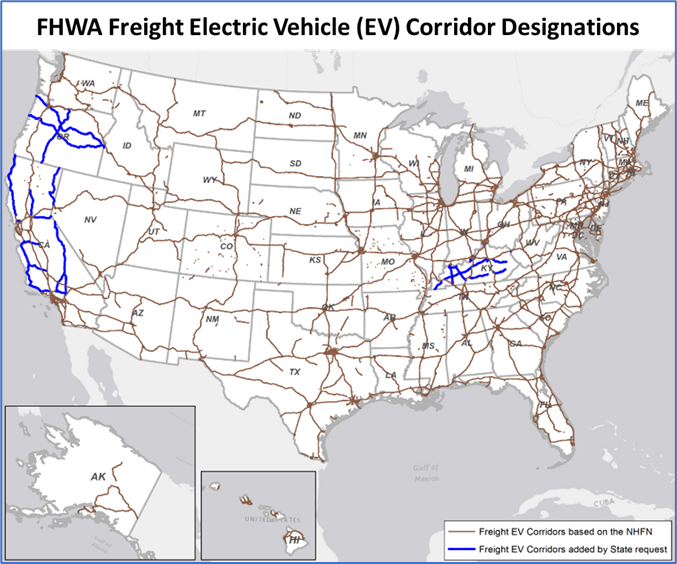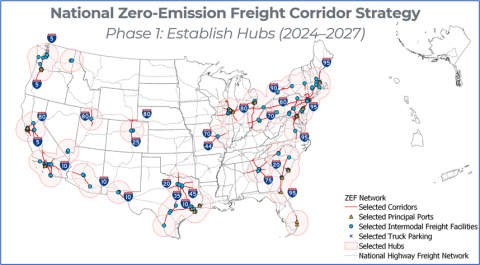U.S. releases national strategy to deploy zero-emission infrastructure for freight trucks
The Biden-Harris Administration today released the National Zero-Emission Freight Corridor Strategy, announcing the plan to accelerate zero-emission infrastructure development by 2040.
The strategy was developed by the Joint Office of Energy and Transportation and the U.S. Department of Energy, in collaboration with the Department of Transportation, and the Environmental Protection Agency.

The plan will guide the deployment of zero-emission medium- and heavy-duty vehicle (ZE-MHDV) charging and hydrogen fueling infrastructure from 2024 to 2040 in four stages.
The first phase includes establishing priority hubs based on freight volumes, from 2024 to 2027. The second phase — connecting hubs along critical freight corridors — is planned to be completed by 2030.

Expanding corridor connections and initiating network development would be the thirs phase, that is planned to last until 2035. The final stage is achieving national network by linking regional corridors for ubiquitous access.
“Medium- and heavy-duty trucks in our current freight network contribute approximately 23% of greenhouse gas emissions in the U.S. transportation sector,” said Federal Highway Administrator Shailen Bhatt.
“These new designations and strategy will help to grow our national EV charging network, encourage clean commerce within the freight community, and support President Biden’s goals of achieving net-zero emissions for the nation by 2050.”
Have your say
This is a moderated forum. Comments will no longer be published unless they are accompanied by a first and last name and a verifiable email address. (Today's Trucking will not publish or share the email address.) Profane language and content deemed to be libelous, racist, or threatening in nature will not be published under any circumstances.
Why did the federal government not take over the yellow terminal locations with a 2 billion bid at the start of the bankruptcy of yellow as charging stations. A very good idea would be to require all new warehouses to have charging stations and overnight parking electric trucks only make sense for the final deliveries on trucks that go less than 220 miles or 350 km a day in temperature above minus 10 we found at low temperature in Canada in cars or delivery trucks even hybrid systems had battery problems. A better solution is to look at put more trailers on the rails and using a third power line or rail.